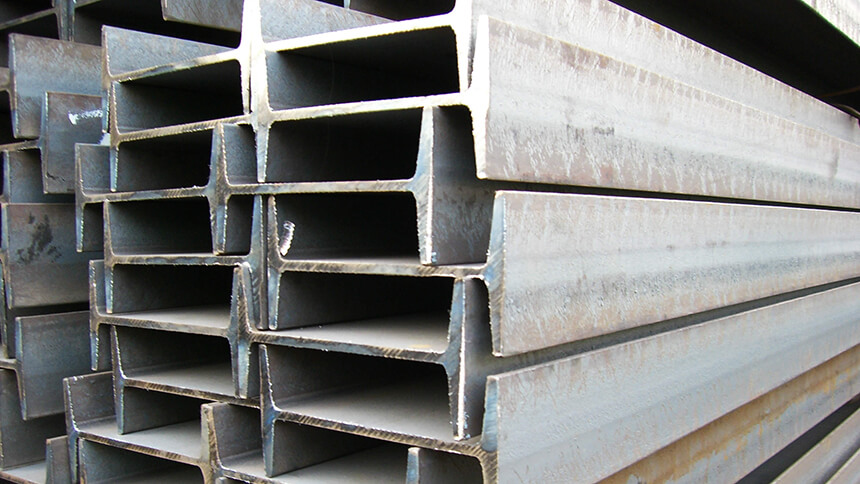ASTM A36 Steel Properties, Modulus of Elasticity, Yield Strength, Material Density, Hardness & Equivalent
ASTM A36 Steel
ASTM A36 steel is one of the most widely used carbon structural steels, although the carbon content of A36 material is maximum 0.29%, it is considered to be the mild steel (content of carbon ≤ 0.25%).
A36 mild steel is often compared to AISI 1018, A36 carbon steel is commonly hot rolled, while 1018 steel is commonly cold rolled.
Notes: There are two versions that define low carbon steel, one with a carbon content between 0.04% (0.05%) and 0.25% and the other with between 0.04% (0.05%) and 0.29%.
A36 Steel Properties
The following tables show ASTM A36 steel properties such as chemical composition, physical and mechanical properties.
Chemical Composition
The following specification gives A36 carbon steel chemical composition in different product froms.
| Chemical Composition (%, ≤) for Shapes | ||||||
| Steel | C | Si | Mn | P | S | Cu |
| ASTM A36 | 0.26 | 0.40 | no requirement | 0.04 | 0.05 | 0.20 |
Note: Shapes with flange thickness greater than 3 in (75 mm) require a manganese content of 0.85-1.35% and a silicon content of 0.15-0.40%.
| A36 Material Chemical Composition (%, ≤), for Plates, Width > 380 mm (15 in.) | |||||||
| Steel | C | Si | Mn | P | S | Cu | Thickness (d), mm (in.) |
| ASTM A36 | 0.25 | 0.40 | no requirement | 0.03 | 0.03 | 0.20 | d ≤20 (0.75) |
| 0.25 | 0.40 | 0.80-1.20 | 0.03 | 0.03 | 0.20 | 20<d≤40 (0.75<d≤ 1.5) | |
| 0.26 | 0.15-0.40 | 0.80-1.20 | 0.03 | 0.03 | 0.20 | 40<d≤65 (1.5<d≤2.5) | |
| 0.27 | 0.15-0.40 | 0.85-1.20 | 0.03 | 0.03 | 0.20 | 65<d≤100 (2.5<d≤ 4) | |
| 0.29 | 0.15-0.40 | 0.85-1.20 | 0.03 | 0.03 | 0.20 | > 100 (4) | |
| A36 Material Chemical Composition (%, ≤), for Plates & Bars, Width ≤ 380 mm (15 in.) | |||||||
| Steel | C | Si | Mn | P | S | Cu | Thickness (d), mm (in.) |
| ASTM A36 | 0.26 | 0.40 | no requirement | 0.04 | 0.05 | 0.20 | d ≤ 20 (0.75) |
| 0.27 | 0.40 | 0.60-0.90 | 0.04 | 0.05 | 0.20 | 20< d≤ 40 (0.75< d≤ 1.5) | |
| 0.28 | 0.40 | 0.60-0.90 | 0.04 | 0.05 | 0.20 | 40< d≤ 100 (1.5< d≤ 4) | |
| 0.29 | 0.40 | 0.60-0.90 | 0.04 | 0.05 | 0.20 | > 100 (4) | |
A36 Mild Steel Mechanical Properties
The lists below summarizes low carbon steel grade A36 mechanical properties such as modulus of elasticity (Young’s modulus), shear modulus, ultimate tensile strength, yield strength, Brinell hardness, etc.
| A36 Steel Mechanical Properties | Notes | |
| Ultimate tensile strength, MPa (ksi) | 400-550 (58-80) | Plates, Shapes and Bars |
| Yield strength, MPa (ksi), ≥ | 250 (36) | Thickness ≤ 200mm (8 in) |
| 220 (32) | Steel plates thickness > 200mm (8 in.) | |
| Elongation, %, ≥ | 20 | Plates and Bars in 200 mm (8 in.) |
| 23 | Plates and Bars in 50 mm (2 in.) | |
| Brinell hardness, HB | 119-162 | Based on the conversion from tensile strength |
| Charpy V-Notch Impact Test, J ( ft·lbf), ≥ | 27 (20) | Structural shapes, alternate core location |
| Modulus of elasticity (Young’s modulus), GPa (ksi) | 200 (29×103) | |
| Shear modulus, GPa (ksi) | 79.3 (11.5×103) | |
| Poissons ratio | 0.26 | |
Physical Properties
A36 material physical properties are given in the lists below:
- Density: 7.85 g/cm3 (0.284 lb/in3)
- Melting point: 1,425-1,538 °C (2,600-2,800 °F)
A36 Material Applications
ASTM A36 structural steel has good weldability, it is usually hot rolled into rectangle steel, square steel, round steel, steel plate, and is also commonly made into all kinds of steel sections such as H beam, I beam, U channel, steel angle, steel tube, etc.
ASTM A36 Steel Equivalent Grade
ASTM A36 steel equivalent to ISO, European EN (German DIN, British BSI, French NF…), Japanese JIS and Chinese GB standard. (For reference)
| ASTM A36 equivalent grade | |||||||||||||
| US | European | Germany | Japan | China | India | ISO | |||||||
| Standard | Steel | Standard | Grade (Steel number) | Standard | Grade | Standard | Grade | Standard | Grade | Standard | Grade | Standard | Grade |
| ASTM A36 / A36M | A36 | EN 10025-2; EN 10025: 1993 | S235 (S235JR); S235JRG2 | DIN 17100 | RSt 37-2, St 37-2 | JIS G3101; JIS G3106 | SS400; SM400A | GB/T 700 | Q235B | IS 2062 | E250 | ISO 630-2 | S235 (S235B, S235C) |
US ASTM A36 vs European S235, Chinese Q235, Japanese SS400 and Indian E250 Steel.

